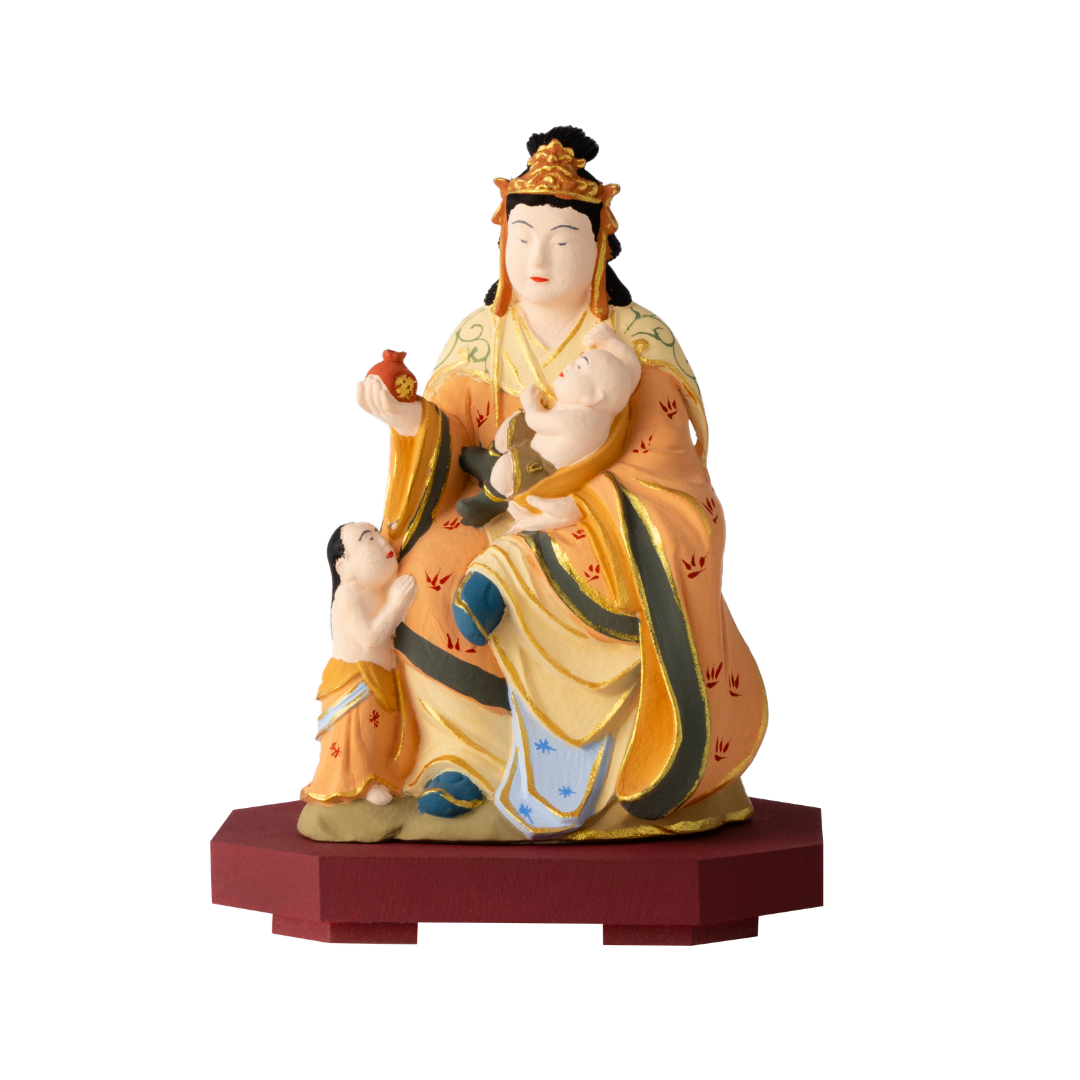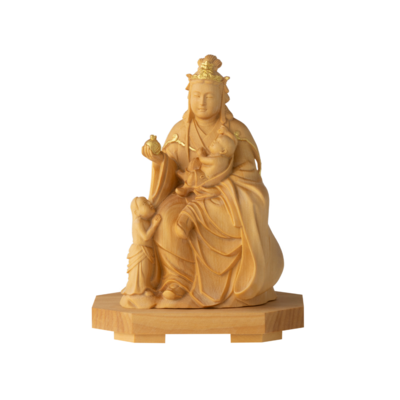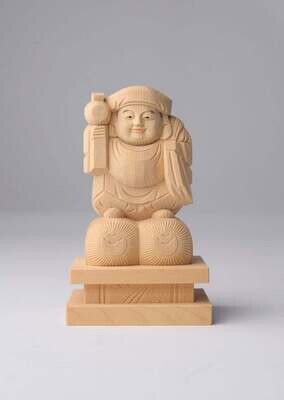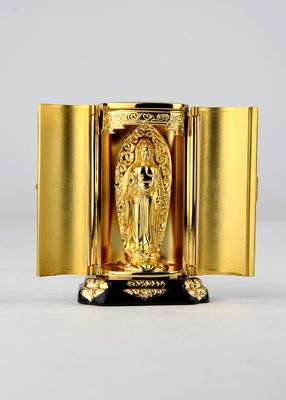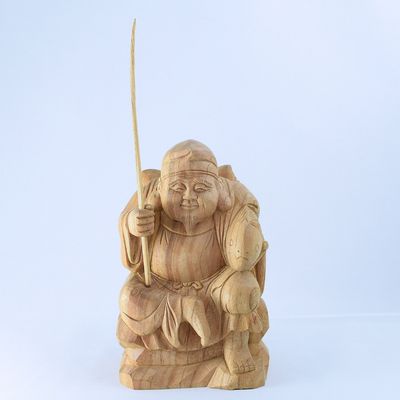Kishi Bojin (Kariteimo) (彩色鬼子母神) (訶梨帝母)
Kishibojin, originally known as Kariteimo in India, was feared by people as a demon who captured and ate human children. Unable to bear this, the Buddha offered guidance to Kishibojin, and in order to gain enlightenment from her past sins, she swore to become a spirit to assist women in easy childbirth and in raising their children. As a result of this, Kishibojin grew to be revered and worshipped.
彩色鬼子母神, often depicted in vivid colors, possesses a striking and distinctive appearance. She typically appears as a demon-like figure with horns and numerous arms. These arms often make gestures of holding or caressing children, and her eyes are large with a frequently fantastical and otherworldly expression. The unique appearance of 彩色鬼子母神 signifies her association with the power of demons, which she uses to protect children and households.
Worship of 彩色鬼子母神 primarily focuses on the health and safety of children and households. Many believers place their trust in her as a sacred presence to whom they offer prayers, seeking her protection and nurturing care for their children. Particularly when children face illness or adversity, it is common to pray to 彩色鬼子母神 and ask for her assistance. Furthermore, she is associated with the prosperity and happiness of households, and many people pray to her for stability and well-being within their homes.
彩色鬼子母神 is enshrined in Buddhist temples and Shinto shrines across Japan, and believers often visit these places to offer prayers. Additionally, she holds a prominent place in folk beliefs and is widely worshipped in private homes, where her images and talismans are commonly displayed on household altars and sacred spaces. Festivals and rituals dedicated to 彩色鬼子母神 are also held, where devotees come together to express their gratitude to her.
In conclusion, 彩色鬼子母神 is a symbolic figure in Japanese culture and religion, revered as a guardian of motherhood and households. Her unique appearance and loving role toward children bring hope and reassurance to many believers, making her a significant presence in Japan's religious landscape.
- Size: H8.5×W6.5×D5 (cm), 65g
- Material: Tsuge (柘植)
- Made in China
- You can choose the option to consecrate this statue (give an eye-opening ceremony) before it is shipped from Japan. If you choose this option, we will bring the statue to a Japanese temple, and pay them the necessary fees so that your statue is properly consecrated. The temple will issue a certificate of proof with your name on it, which will also be shipped together with your statue
- Shipped globally from Japan by using DHL. DHL is the world-class shipping services provider who makes international delivery a fast, smooth, and hassle-free experience. Delivery time can be faster than when shopping at an e-commerce website in your country, and of course your package will be covered by insurance. You can check the shipping cost for your entire order before you make a purchase
